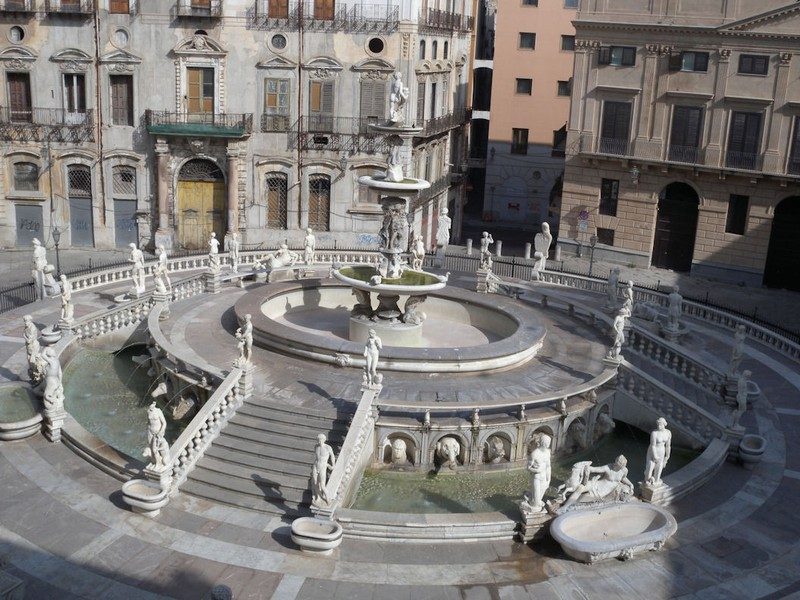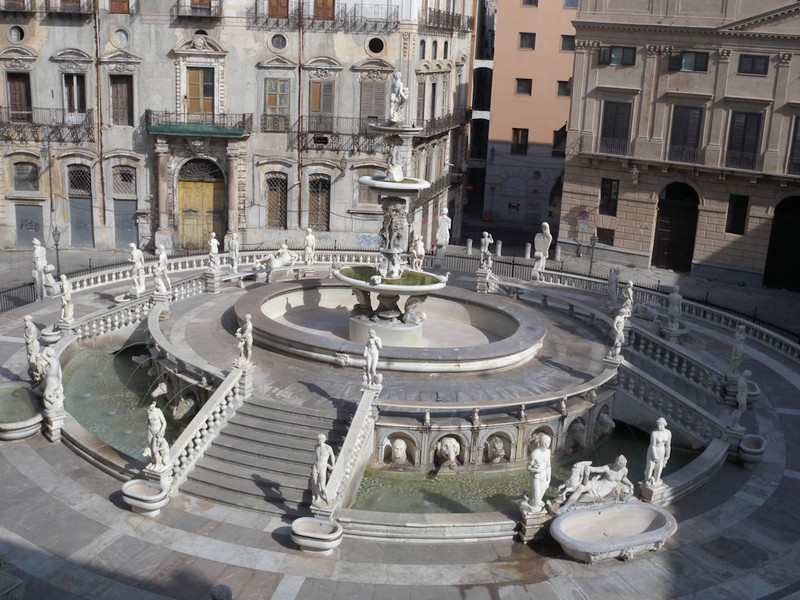Piazza and Fontana Pretoria - Palermo
Street View (if present)
Description
Piazza and Fontana Pretoria - Palermo
Piazza Pretoria also known as Piazza della Vergogna.
From the 1860th century to 1554, the fountain was considered the representation of the corrupt municipality, and the Palermitans nicknamed the square, also for the nudity of the statues, Piazza della Vergogna. At the center of the square is the Fontana Pretoria (XNUMX), the work of Francesco Camilliani, which, occupying a large part of its extension, strongly characterizes the Praetorian Plan. Three of the four sides are closed by buildings: the Palazzo Pretorio (seat of the Municipality) built in the XNUMXth century and renovated in the XNUMXth century, the Church of Santa Caterina (late XNUMXth century), and two baronial palaces: Palazzo Bonocore and Palazzo Bordonaro. On the fourth side the square descends with a flight of steps onto via Maqueda.
Pretoria Fountain
Pretoria square. Made between 1552 and 1555 by the Tuscan sculptors Francesco Camilliani and Michelangelo Nocchierino. The fountain initially located inside the garden of Palazzo di San Clemente in Florence, was in fact commissioned by Don Pedro de Toledo to the Florentine sculptor Francesco Camilliani, who built it, in collaboration with Michelangelo Naccherino, in 1554. In 1573, at the death of Don Pedro, the eldest son and heir Don Garçia de Toledo sold it to the Senate of Palermo, who decided to place it in the square overlooking the Palazzo Pretorio. The Pretoria Fountain in 1957 The fountain arrived in Palermo disassembled in 644 pieces. To make way for the monumental construction, conceived for an open place, several houses were demolished, some adaptations were devised in the recomposition of the pieces and others were added. The care of the recomposition and adaptation of the fountain was entrusted in 1574 to Camillo Camilliani, son of Francesco, who completed his interventions in 1581. [1] Throughout the eighteenth and part of the nineteenth century it was considered a kind of representation of the corrupt city municipality, which saw in those images the reflection and questionable characters of the time. The Palermitans nicknamed the square, also for the nakedness of the statues, Piazza della Vergogna. The fountain revolves around a central basin surrounded by four bridges of stairways and a fence of balustrades and consists of three concentric basins from which the play of water that is poured from the top by a Bacchus starts. Distributed within this architectural construction are the statues depicting the gods of Olympus and the rivers of Palermo, Oreto, Papireto, Maredolce and Gabriele. This last statue represented the Tuscan river Mugnone, famous in Boccaccio's novellas. The central part is surrounded by sculptural representations of various mythological deities
Card insertion: Heritage Sicily
Find out more on Data bank of the Material Heritage of Sicily
Get to know the Sicilian Cultural Heritage databases: Data Maps Heritage

Get to know the Sicilian Cultural Heritage databases: Data Maps Heritage
Go to Google Maps
Send a notice to the publisher
[contact-form-7 id="18385"]


